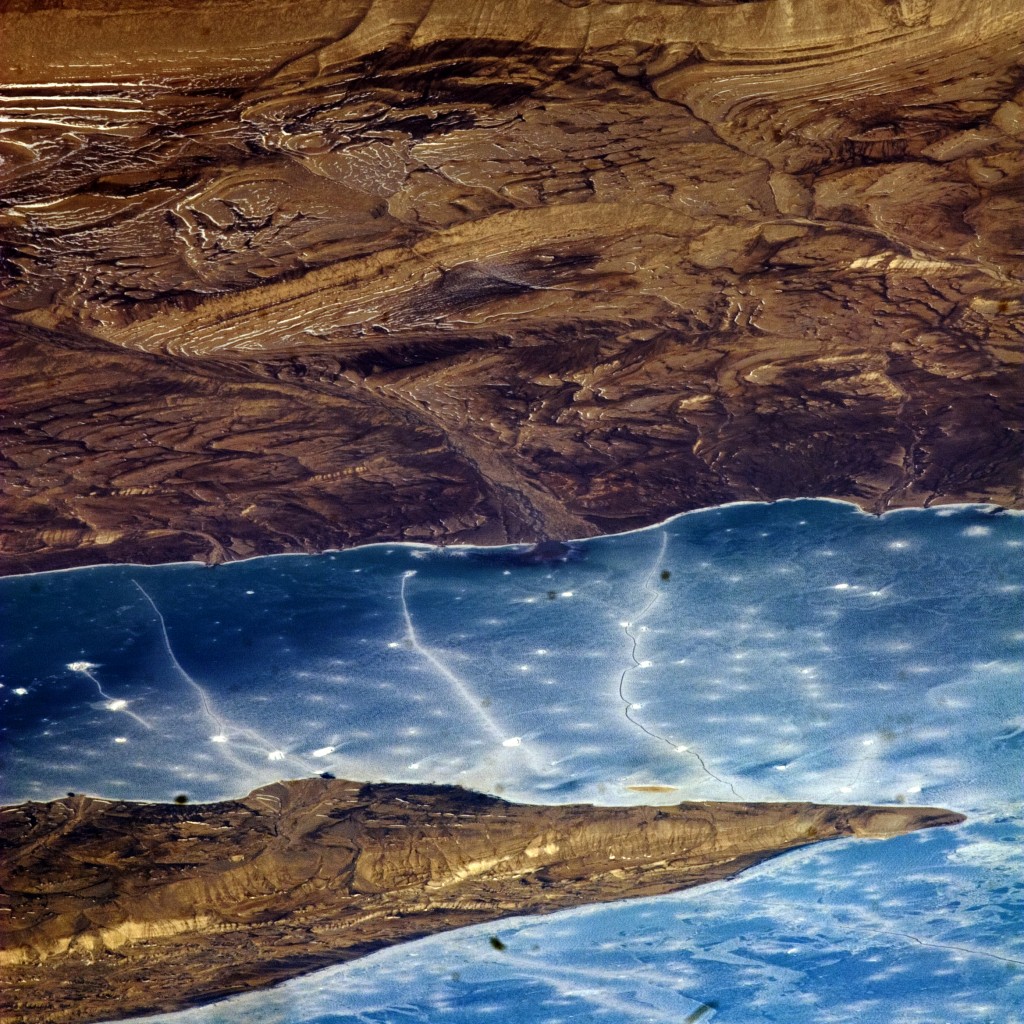
“Ellesmere Island” by Jean-Daniel Champagnac, distributed by the European Geosciences Union under a Creative Commons licence.
Located within the Canadian Arctic Archipelago, Ellesmere Island is the world’s tenth largest island and features Canada’s most northerly point but little else apart from vast landscapes of pristine natural habitat. It is separated from Greenland only by the Nares Strait, a major pathway for sea ice flushing out of the High Arctic.
Belonging to the Canadian territory of Nunavut, Ellesmere’s permanent population is under 200, most of whom endure the hostile weather found at Grise Ford, where the annual temperature is a staggering -16.5°C.
It comes as no surprise, then, that this mosaic of colours was captured from high above Ellesmere’s unforgiving environment. Jean-Daniel Champagnac, of the Geological Institute of the Swiss Federal Institute of Technology, Zurich, explains, “This picture was taken through the window of an airplane cruising at around 10,000m en route between Frankfurt, Germany and Anchorage, Alaska. Here you can see the bare rock of Ellesmere Island, with presumably folded sedimentary rocks, and a frozen fjord being unglaciated. This picture, taken in June 2011, has been quite substantially modified from the raw initial picture.”
As with many untouched Arctic environments, it is thought Ellesmere may be rich in natural resources, specifically in thermal coal deposits used to produce heat and electricity. If confirmed, this finding could be pivotal for the future of Nunavut. Canada’s mostly-aboriginal territory (83.6% Inuit, according to the 2006 census) is currently experiencing an energy crisis.
About his picture, Champagnac concludes, “It is always worth having a camera along when you fly, especially on a clear day.” We couldn’t agree more and we encourage you to submit more of your aerial shots to Imaggeo.net.
Imaggeo is the EGU’s online open access geosciences image repository. All geoscientists (and others) can submit their images to this repository and since it is open access, these photos can be used by scientists for their presentations or publications as well as by the press and public for educational purposes and otherwise. If you submit your images to Imaggeo, you retain full rights of use, since they are licensed and distributed by the EGU under a Creative Commons licence.
